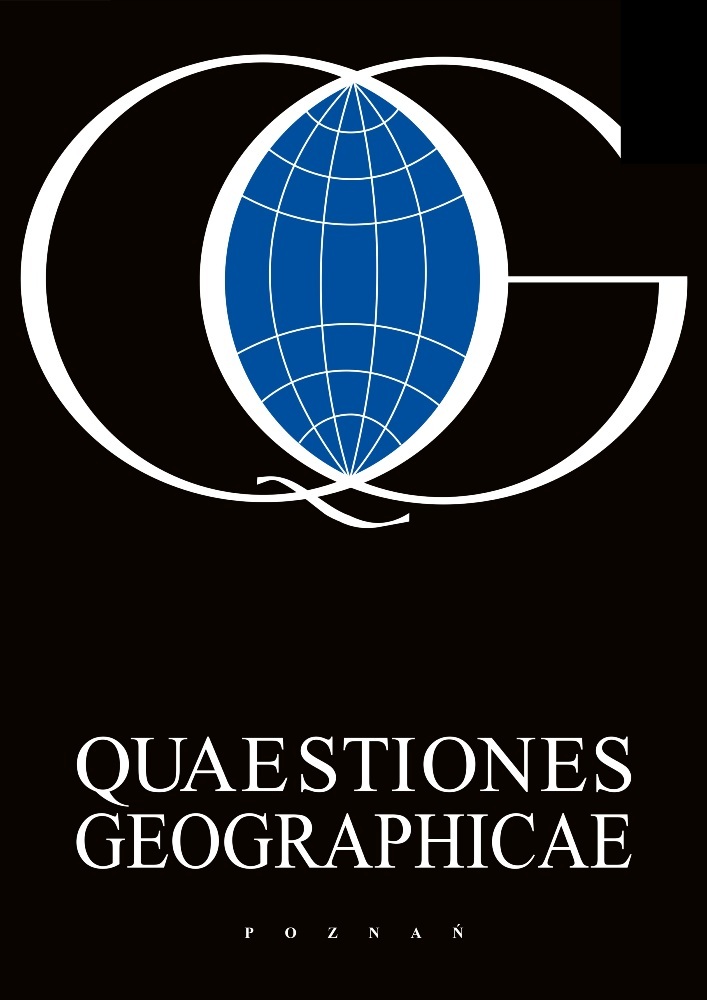Abstract
The paper presents researches that were conducted in Czarna Orawa River catchment, situated within the Tatra and Beskidy Mountains. Czarna Orawa River channel is segmental meandering system with the index of tortuosity up to 1.6. The aim of the article is to characterize gravels which were transported from the Tatra Mountains and their role in valley bottom formation. The gravels; originating from Beskidy and Tatra mountains, supply the alluvial cone of Czarny Dunajec. In Czarna Orawa Valley we meet coarser gravel (the Tatra Mountains gravel) and more angular than grains from the Beskidy Mountains. On the Holocene terraces in the valley gravel layer is 1-2 m thick. The grains are 1-6 cm in diameter and the biggest are found on the south bank (up to 20 cm). Between Jabłonka and Orawa Reservoir the change of petrographic composition is observed. Beneath Jabłonka village flysh gravels are common, and in the lower part, in the neighbourhoods of Orawa Reservoir, more than 55% are granites and gneisses. Gravel se-diments are basic material building Holocene plain, showing fast erosional incision into the higher terrace level.
References
Baumgart-Kotarba M., 1992. Rozwój Rozwój geomorfologiczny geomorfologiczny Kotliny Orawskiej w warunkach ruchów neotektonicznych. Studia Geomorphologica Carpatho-Balcanica, XXV–XXVI: 5–27.
Baumgart-Kotarba M. & Kotarba A., 1979. Wpływ rzeźby dna doliny i litologii utworów czwartorzędowych na wykształcenie koryta Białej Wody w Tatrach. Folia Geographica, XII: 49–65.
Bizubova M., Minar J. & Machova Z., 2003. The Turcianska Kotlina Basin: The example of intramountian basin evolution. Geomorphologia Slovaca, 1: 118–123.
Halicki B., 1930. Dyluwialne zlodowacenie północnych stoków Tatr. Sprawozdanie Pol. Inst. Geol., 5(3–4): 377–534.
Klimaszewski M., 1948. Polskie Karpaty Zachodnie w okresie dyluwialnym. Prace Wrocławskiego Towarzystwa Naukowego, Seria B 7: 1–233.
Klimaszewski M., 1950/1951. Rzeźba Podhala. Czasopismo Geograficzne, 21–22(1–4): 237–250.
Olszewski A., 1974. Jednostki litofacjalne glin subglacjalnych nad dolną Wisłą w świetle analizy ich makrostruktur i makrotekstur. Studia Societatis Scientarum Torunensis, 8(2): 1–145.
Rutkowski J., 1995. Badania uziarnienia osadów bardzo gruboziarnistych. In: E. Mycielska-Dowgiałło (ed.), Badania osadów czwartorzędowych. Wydawnictwo WGiSW Uniwersytetu Warszawskiego, Warszawa: 106–115.
Sobiecki K., 2000. Wykształcenie holoceńskich poziomów terasowych w dorzeczu górnej Wisłoki. Prace Geograficzne Instytutu Geografii UJ, 105: 300–319.
Struska M., 2008. Neogeńsko-czwartorzędowy rozwój strukturalny Kotliny Orawskiej w świetle badań geologicznych, geomorfologicznych oraz teledetekcyjnych. PhD. Dissertation, Archiwum Wydziału Geologii, Geofizyki i Ochrony Środowiska AGH, Kraków.
Watycha L., 1976. Neogen niecki orawsko-nowotarskiej. Kwartalnik Geologiczny, 20(3): 575–585.
Watycha L., 1977. Objaśnienia do szczegółowej mapy geologicznej Polski. Arkusz Jabłonka, 1:50 000. Instytut Geologiczny, Warszawa.
License
This content is open access.
